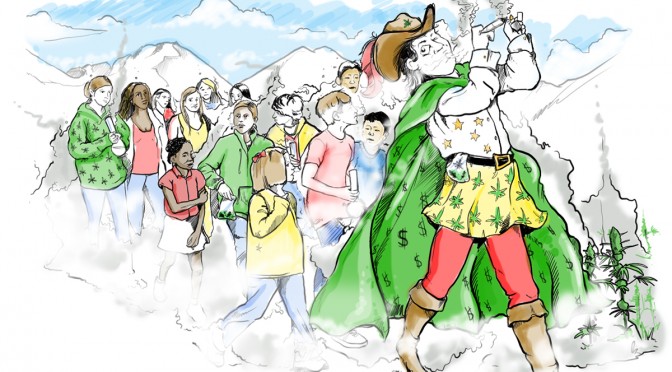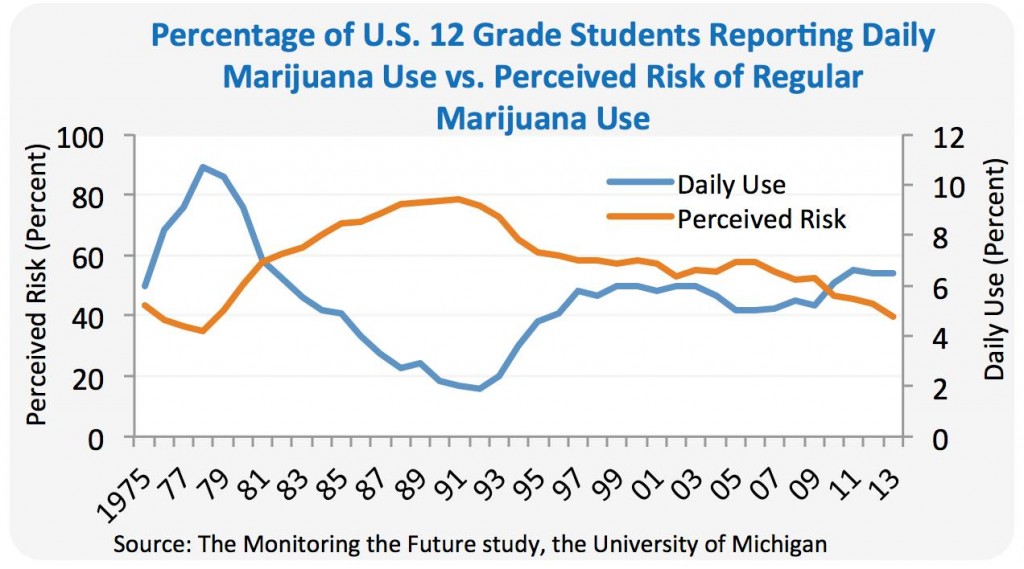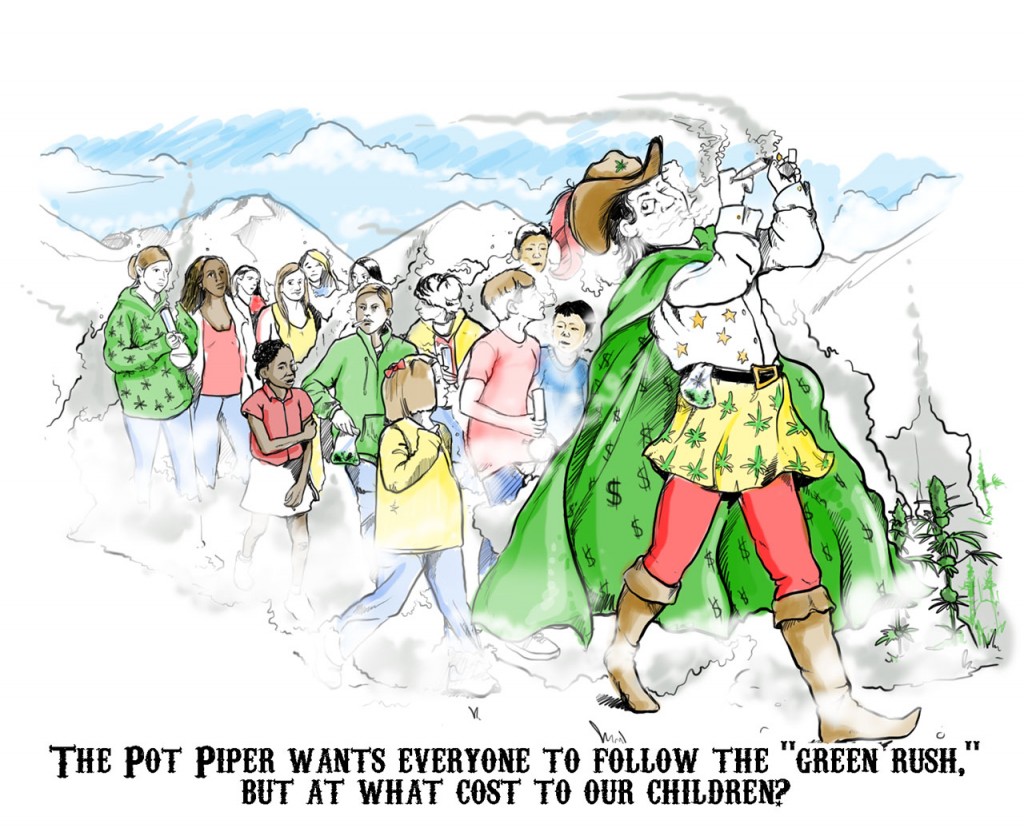(Edited commentary from two of our followers who insisted we share both sides of the issue.)
Dear Friend — The reasons for the rest of America to follow the states of Washington and Colorado, and to legalize marijuana, are overwhelming. Even if you’re not with the program yet, read on and then … FORWARD this MESSAGE!
(7)TAX and REGULATE To enable cities, counties and states to siphon all that revenue from the criminals, enough marijuana users will be happy to pay twice the street price to eliminate the underground market. During that stretch, fire departments will get new trucks hospital emergency teams will get overtime pay to deal with amateur chemists making butane hash oil in hotels, homes and apartments buildings. Forget the surge in tax money for mental health and addiction treatment.
(6) DISCOURAGE TEEN USE. Never mind that teen use of marijuana plunged by 33% from 1980 to 1992. We still say the War on Drugs is responsible for making our youth want to light up, and try pot brownies. Obviously, when you tell kids to avoid something, they go after it. Therefore, the best way to discourage teen use of pot is to have competition. The street price will drop by 50% and we can let Phillip Morris put marijuana cigarettes and snacks in convenience stores. When marijuana is all over the place, kids won’t want it. Only mature adults will want it and maturity is automatic when a person turns 21.
(5) GET TOUGH WITH DRUG LORDS. When 20 million of my fellow stokers, jokers and midnight tokers can get their marijuana legally, the cartels are likely to shift into something respectable. Those guys will soon be up against an economic wall. Nobody understands ADDICTION better than some of this country’s great corporations, especially the pharmaceutical, tobacco and alcohol.
We need Big Business to take charge, enhance the potency of the plant, nail down the distribution system, and build good vending machines. Mom & Pop growers can’t do that. Let Phillip Morris and Miracle Gro show the way. The answer to Big Booze and Big Cigs is … jeez, what would it be called? Maybe … BIG DOPE.
(4) SAFER ROADS Marijuana users don’t drive fast and get angry like those drunks. If anything, they have to be more careful when they’re baked. Besides, the Marijuana Policy Project tells us that Marijuana is SAFER than Alcohol. In October 2012, Joseph Beer crashed his new sports car into a tree on a Long Island highway. Four of his friends died, his own injuries were minor, and he got 5 to 15 years. Court testimony found Joe to be a chronic marijuana smoker, and wired with weed during this wild ride. Okay, bad break for Beer’s friends. What can anyone conclude from a single accident? –It’s not safe to drive at 100 miles per hour. (Of course the weed has nothing to do with that, since that makes you drive slowly.)
(3) POLICE FREE FOR SERIOUS CRIMES. Making marijuana cheaper, common, and not such a big deal will free up law enforcement officials to concentrate on real crime. Marijuana will be in all 50 states, in every city, with home delivery like happens with pizza, and vending machines close to schools, and candy sellers walking up and down the bleachers during ball games, and snacks with kiddish labels — all of this will also guarantee that the cops have “more serious problems” to address!
(2) REDUCE CRIME BY REMOVING LABELS Things that have been criminal for decades can become legal. After pot-use becomes a street-corner norm, we can carry that lesson over to neighborhood speed limits, shoplifting, insider trading, and software piracy. There will still be burglaries but so what, we’ll have our freedom. When enough people DO IT, the law should just say SCREW IT, except for
(1) DOMESTIC VIOLENCE, and we will save police for domestic abuse cases.
Doing away with criminality of marijuana, our police forces can focus on domestic violence, child abuse and pedophilia, since those guys are bad anyways, and it has nothing to do with drugs. Their addictions are sex, bullying and fighting. With those guys locked locked up, the rest of us will be totally free and dancing in the streets. It’ll be 420 every day and that’s our America!
Yours for a Healthy America,
NORMA L. NOSTRUMS and NORM L. SAFER




